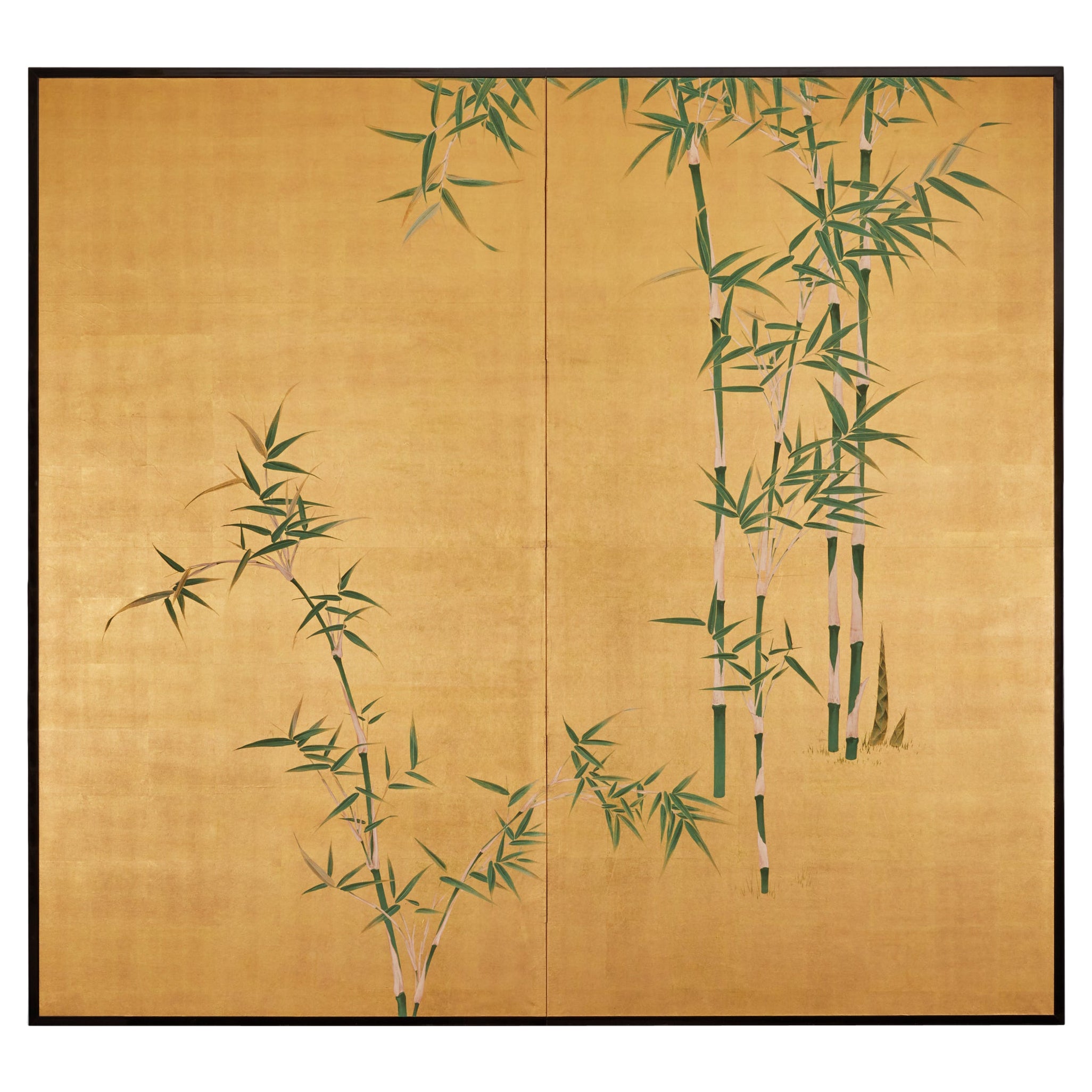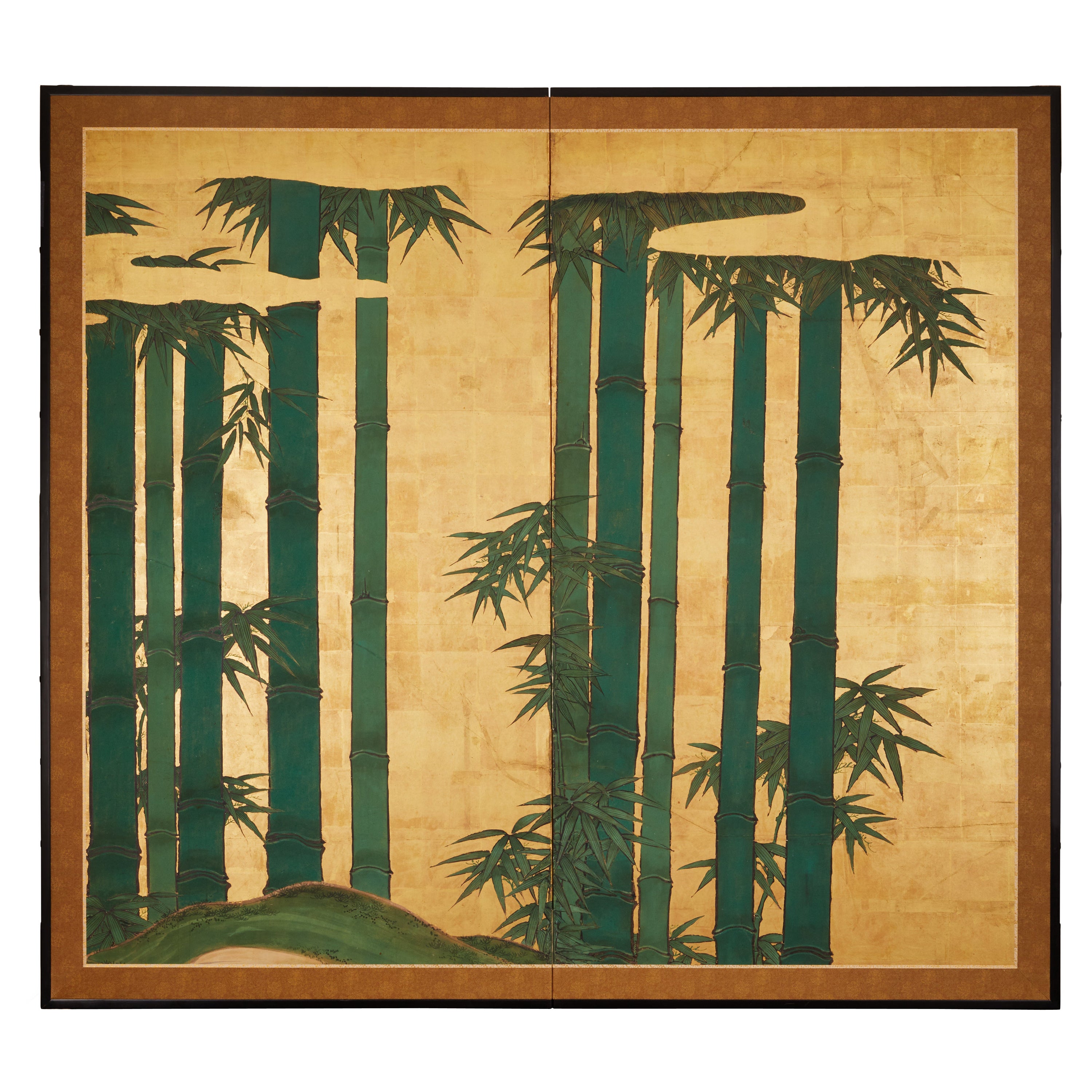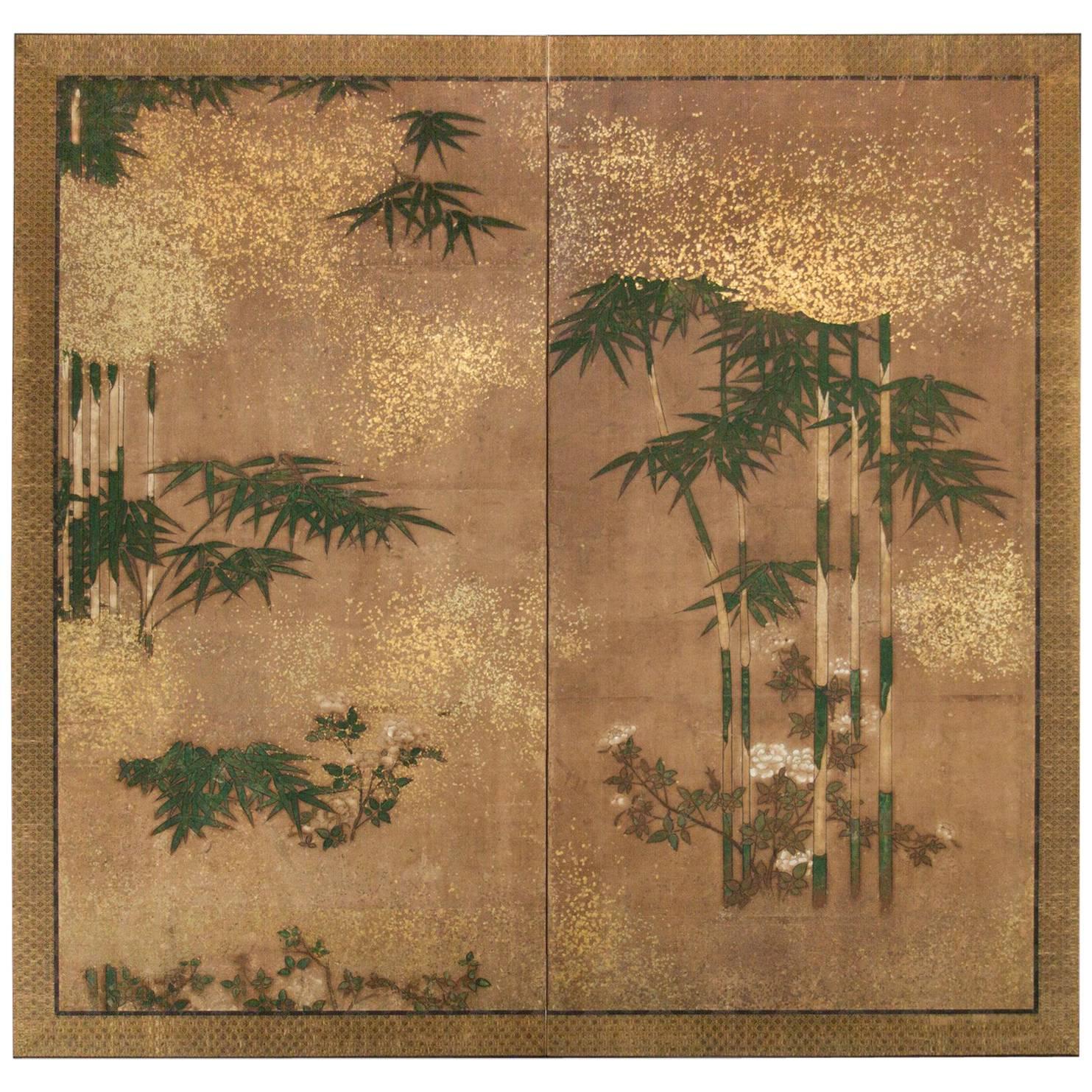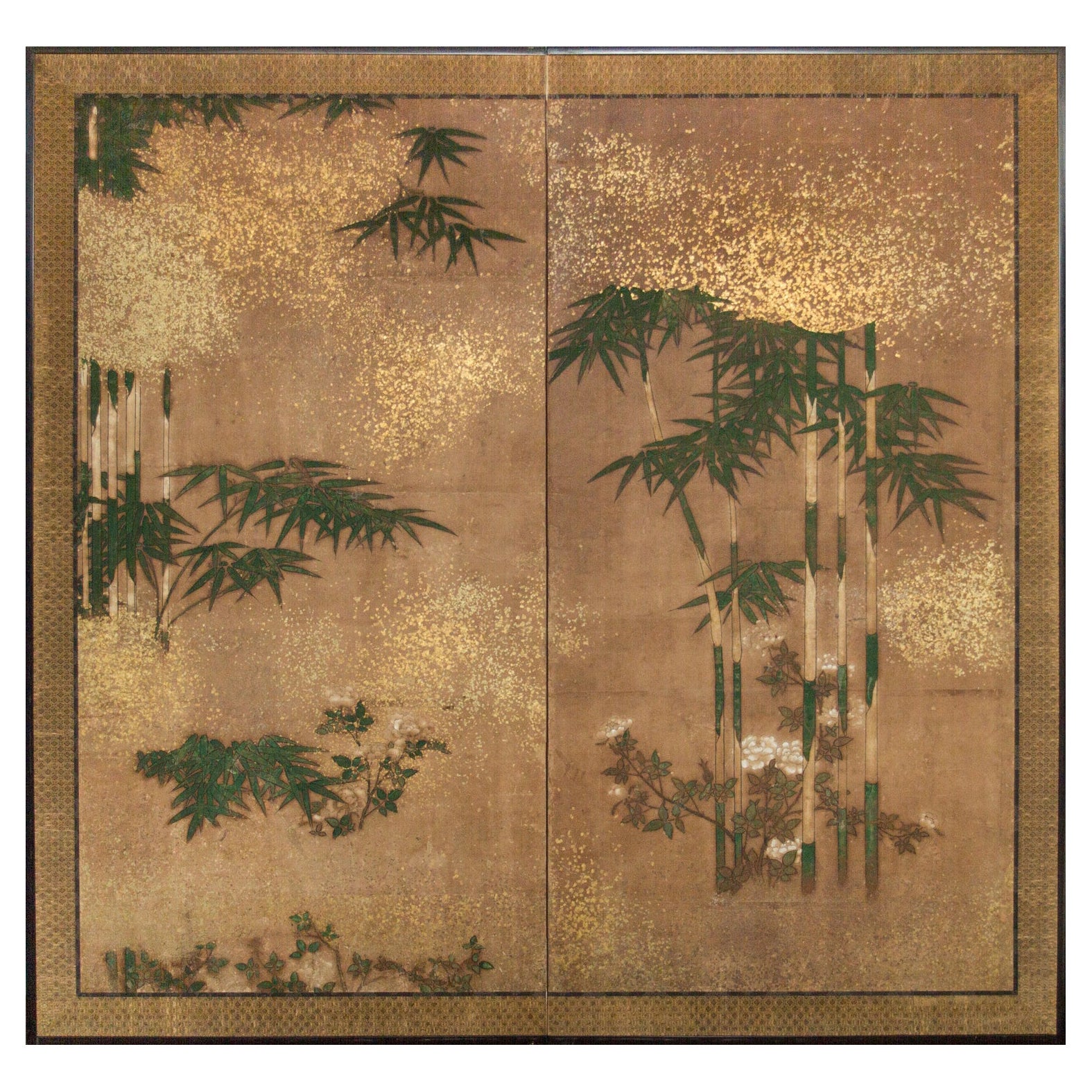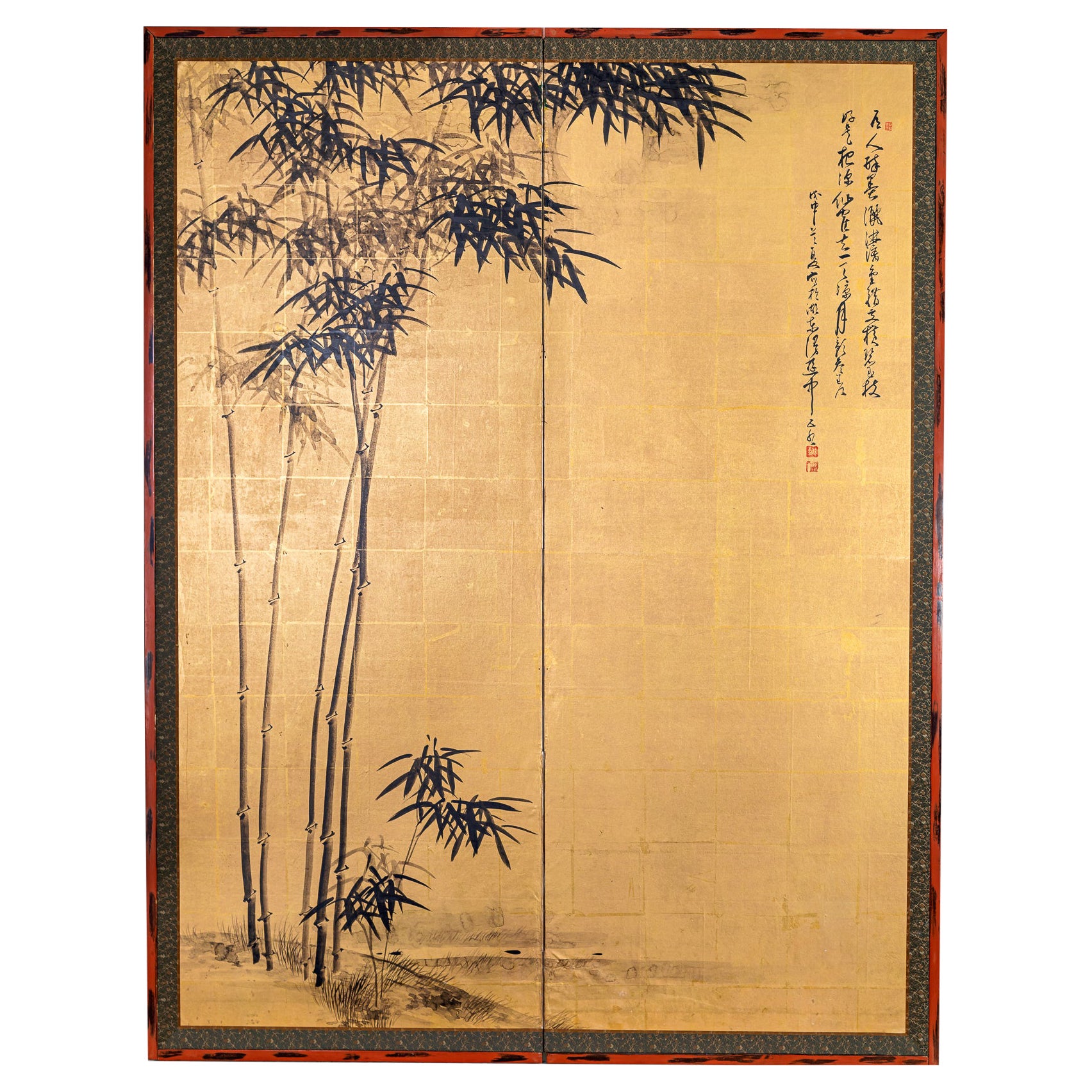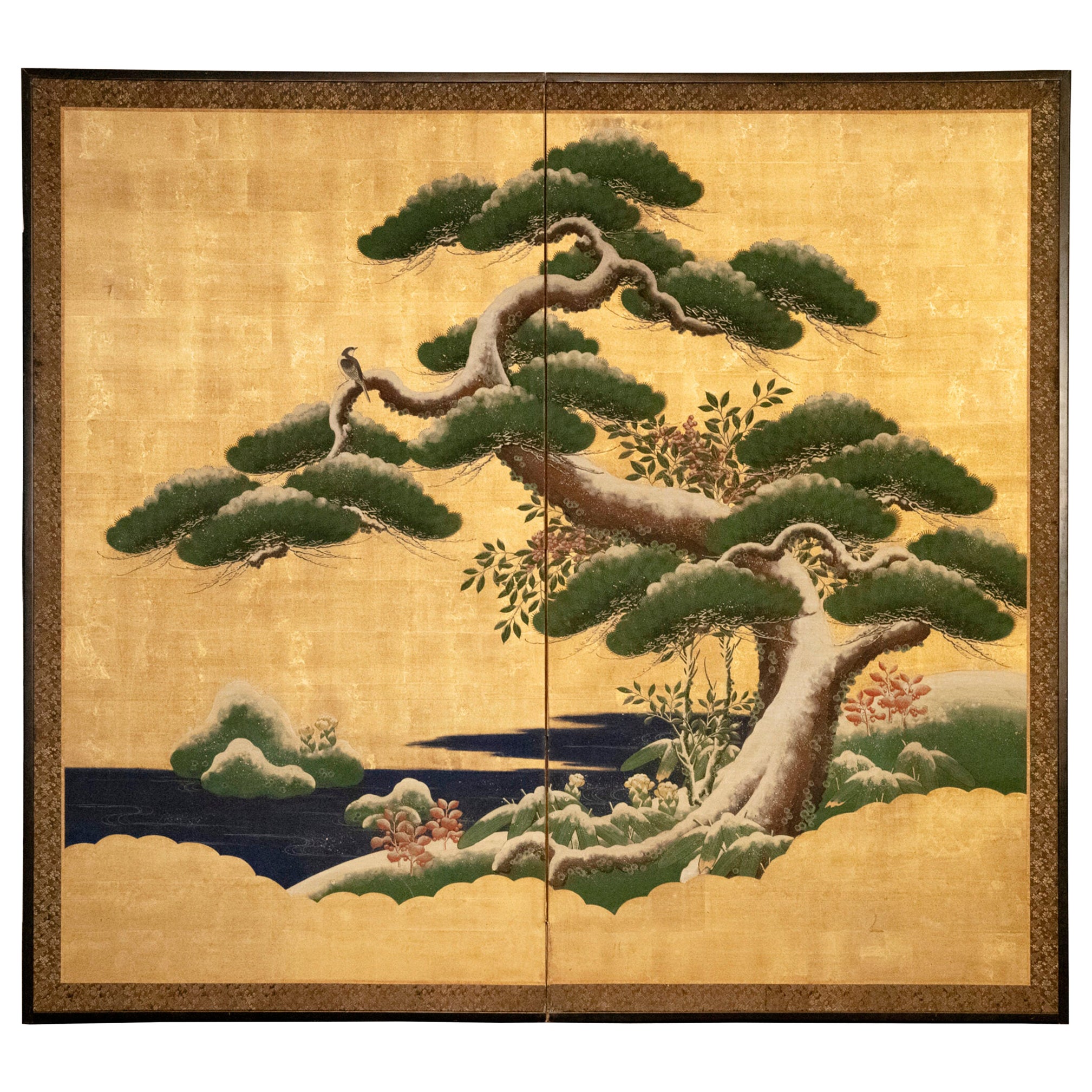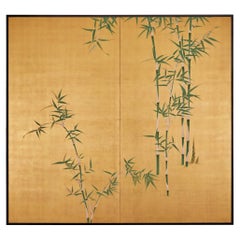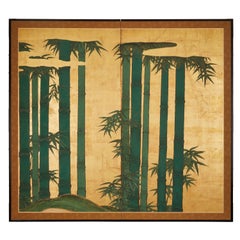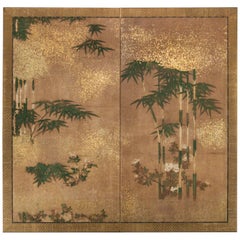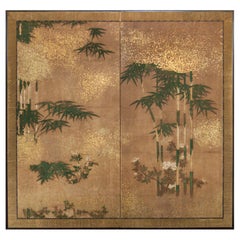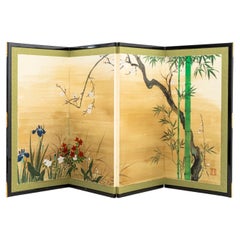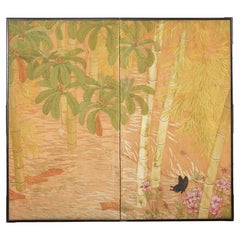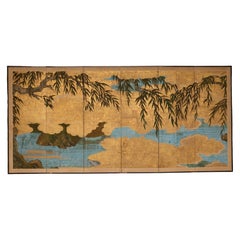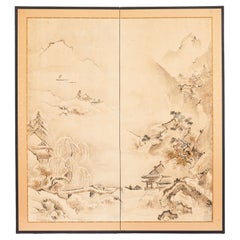Items Similar to Japanese Two Panel Screen Bamboo in Early Snow
Want more images or videos?
Request additional images or videos from the seller
1 of 7
Japanese Two Panel Screen Bamboo in Early Snow
$97,750
£74,107.93
€85,426.85
CA$137,665.19
A$152,660.52
CHF 80,211.78
MX$1,865,252.03
NOK 1,003,558.74
SEK 942,011.34
DKK 637,728.14
About the Item
Kano School painting, of the edge of a bamboo grove in early winter snow with very fine gold mist. Mineral pigments and gold dust on mulberry paper with 18th century brocade.
- Dimensions:Height: 67.25 in (170.82 cm)Width: 71 in (180.34 cm)Depth: 0.75 in (1.91 cm)
- Materials and Techniques:
- Place of Origin:
- Period:
- Date of Manufacture:18th Century
- Condition:Condition report upon request.
- Seller Location:Hudson, NY
- Reference Number:Seller: S03391stDibs: LU855128552012
About the Seller
5.0
Recognized Seller
These prestigious sellers are industry leaders and represent the highest echelon for item quality and design.
Established in 1971
1stDibs seller since 2008
166 sales on 1stDibs
Typical response time: 8 hours
Associations
The Art and Antique Dealers League of AmericaAntiques Associations Members
- ShippingRetrieving quote...Shipping from: Hudson, NY
- Return Policy
Authenticity Guarantee
In the unlikely event there’s an issue with an item’s authenticity, contact us within 1 year for a full refund. DetailsMoney-Back Guarantee
If your item is not as described, is damaged in transit, or does not arrive, contact us within 7 days for a full refund. Details24-Hour Cancellation
You have a 24-hour grace period in which to reconsider your purchase, with no questions asked.Vetted Professional Sellers
Our world-class sellers must adhere to strict standards for service and quality, maintaining the integrity of our listings.Price-Match Guarantee
If you find that a seller listed the same item for a lower price elsewhere, we’ll match it.Trusted Global Delivery
Our best-in-class carrier network provides specialized shipping options worldwide, including custom delivery.More From This Seller
View AllJapanese Two Panel Screen: Young Bamboo on Gold
Located in Hudson, NY
Symbolizing the Sun, gold is often used in shrines and temples in Japan. Gold has been extensively recognized to represent wealth, while bamboo is said to bring good luck due to its ability to regenerate in the forest. A beautiful composition of the two together...
Category
Antique Late 19th Century Japanese Paintings and Screens
Materials
Gold
Japanese Two Panel Screen: Bamboo on Gold
Located in Hudson, NY
Bamboo grove on a knoll with stylized gold mist. Mineral pigments on gold leaf with silk brocade border.
Category
Antique Early 19th Century Japanese Paintings and Screens
Materials
Gold Leaf
Japanese Two Panel Screen: Bamboo Grove on Mulberry Paper with Gold Dust
Located in Hudson, NY
Kano School painting of a bamboo grove with blooming flowers and gold dust mists. Painted in mineral pigments on mulberry paper with gold dust and a silk brocade border.
Category
Antique Early 19th Century Japanese Edo Paintings and Screens
Materials
Gold
Japanese Two Panel Screen: Bamboo Grove on Mulberry Paper with Gold Dust
Located in Hudson, NY
Kano School painting of a bamboo grove with blooming flowers and gold dust mists. Painted in mineral pigments on mulberry paper with gold dust and a silk brocade border.
Category
Antique Early 19th Century Japanese Paintings and Screens
Materials
Gold
Japanese Two Panel Screen: Bamboo with Calligraphy Poem
Located in Hudson, NY
Moon and bamboo in ink on gold paper with red and black lacquered negoro frame. (Meiji period) Calligraphy reads: Beauty in ink painting with standing woods and branches, like in par...
Category
Antique Early 1900s Japanese Paintings and Screens
Materials
Paper
Japanese Two Panel Screen: Pine in Snow
Located in Hudson, NY
Kano School, Mineral pigments on gold leaf with silk brocade border and lacquer wood trim.
Category
Antique Mid-19th Century Japanese Paintings and Screens
Materials
Gold Leaf
You May Also Like
Japanese Bamboo & Orchids 4-Panel Byobu Screen
Located in Astoria, NY
Japanese Bamboo and Orchids Scene Four-Panel Byobu Screen, gouache on silk, with iron red six character mark on the lower right panel, in ebonized wood frame. 24" H x 39" W. Provenan...
Category
20th Century Japanese Ming Paintings and Screens
Materials
Silk, Hardwood
Japanese Taisho Two Panel Screen Bamboo Butterfly Landscape
Located in Rio Vista, CA
Serene Japanese late Taisho period early Showa period two-panel byobu screen featuring a colorful bamboo loquat landscape with a butterfly. Beautifully crafted in the Nihonga school ...
Category
20th Century Japanese Taisho Paintings and Screens
Materials
Brass
Japanese antique screen - EDO period - Willow over a stream
Located in Prahran, Victoria
Antique Japanese 6 panel screen from the early Edo period (C1650). One of a pair (both available). This magnificent golden screen shows...
Category
Antique 1650s Japanese Edo Paintings and Screens
Materials
Gold Leaf
Japanese Meiji Two-Panel Screen Chinese Country Winter Landscape
Located in Rio Vista, CA
Late 19th / early 20th century Japanese Meiji period two-panel folding byobu screen featuring a winter landscape with a Chinese country villa and distant village. Kano School screen ...
Category
Antique 19th Century Japanese Meiji Paintings and Screens
Materials
Brass
JapaneseAntiques Terasaki kogyo, Gold background, Bamboo and plum folding screen
Located in Niiza, JP
material: paper and cloth
Unfolded size: 1600 x 1660 mm
Can be folded in half: 800 x 1660 mm, 6 kg
Estimated packing size: (Sandwich with 12mm plywood)
10 × 95 × 185cm 30kg
A bold ...
Category
20th Century Paintings and Screens
Materials
Paper
Antique 19th Century Japanese Two-Panel Screen ‘Byobu’, Kano School, Edo Period
Located in London, GB
Japanese Kano School Edo period two-panel screen depicting flowering prunus and bamboo on a rock formation, with colorful birds next to a body of water. ...
Category
Antique Mid-19th Century Japanese Edo Paintings and Screens
Materials
Gold Leaf
More Ways To Browse
Japanese Antique Gold Screen
Japanese Screen Bamboo
18th Century Japanese Art
18th Century Screen
Kano School
Japanese Kano Screen
Japanese Screen Kano School
Kano School Screen
18th Century Japanese Screens
Fine Minerals
Japanese Screen Snow
Antique Chinese Panel
Gilt Lacquer Panel
Chinese Screen Painted
Pair Of Japanese Paintings
Japanese Silk Brocade
Antique Japanese Silk Screen
Japanese Scrolls Painting
